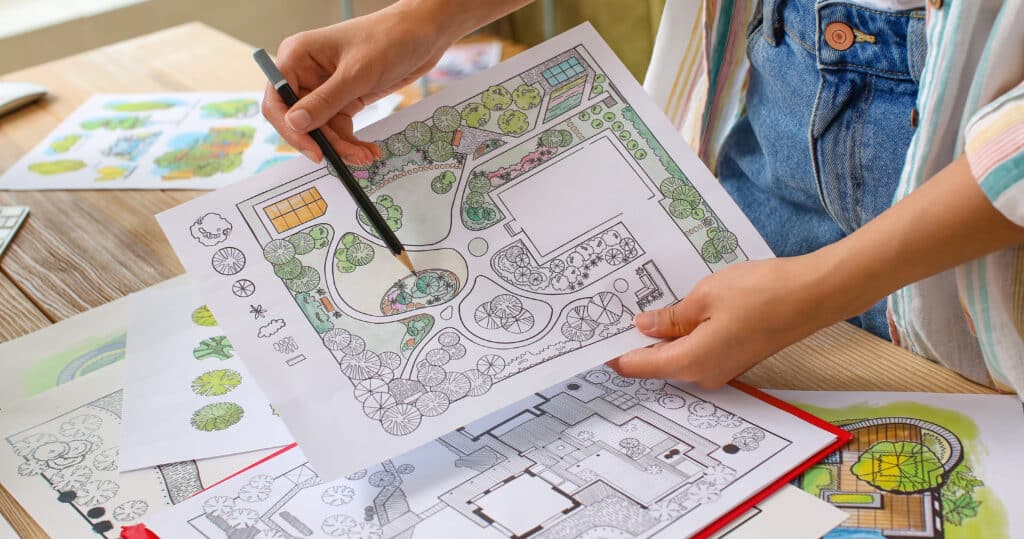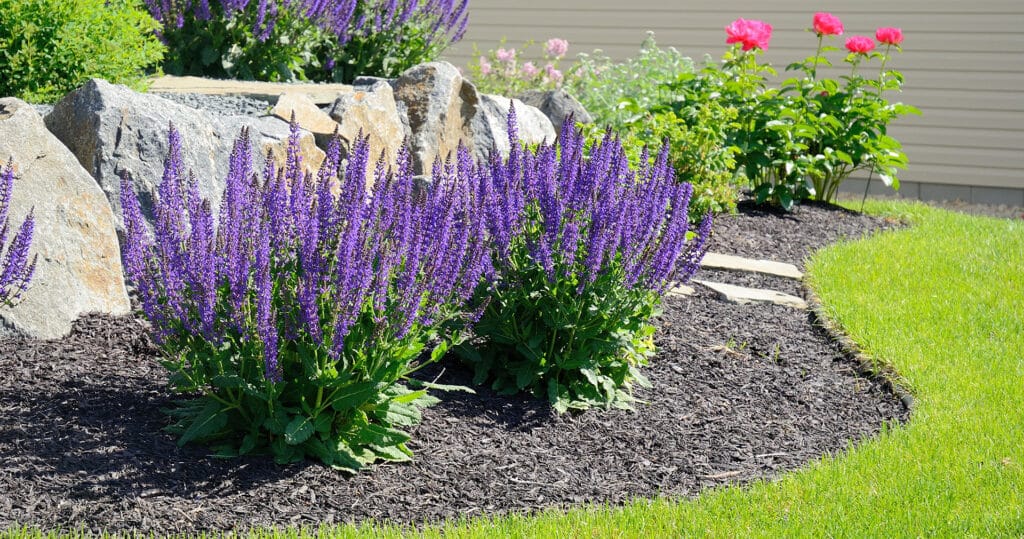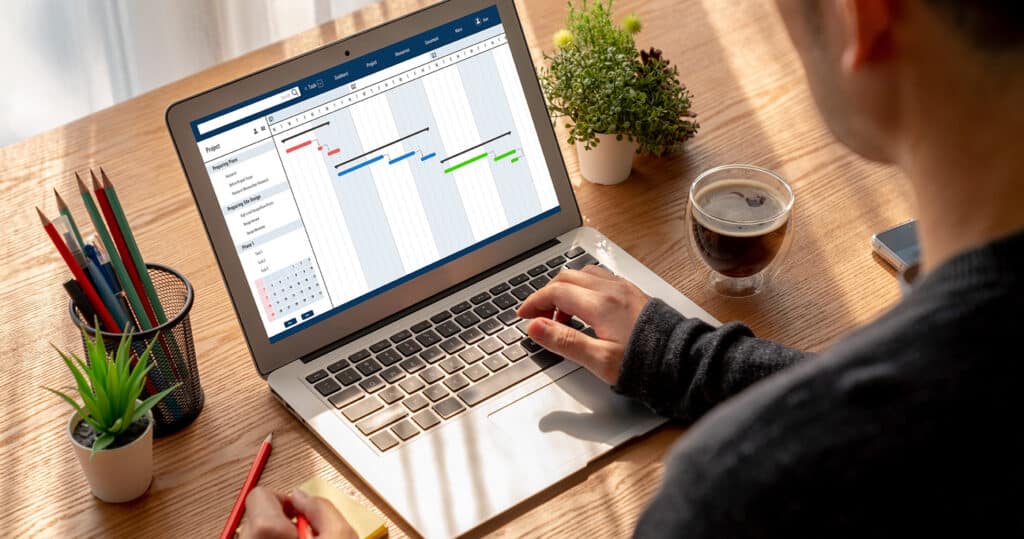Landscape designers use a variety of software programs to do their jobs. There are applications that can help a landscaper plan, lay out, and even present their designs. These specialized apps can make the process both easier and faster.
By contrast, hand-drawn designs tend to be slow and time-consuming.
But design programs aren’t the only thing needed to run a landscaping business. There are whole suites of business management software that are also critical. After all, you don’t just design breathtaking outdoor spaces. You also attend to practical things, like generating quotes, paying employees, and billing customers.
In this article, we’ll look briefly at both types of software. We’ll provide a high-level overview of what you’ll need to take your landscape design efforts digital. We’ll also give you a general idea of the business management applications you’ll need.
Like anything else related to running a business, the specific applications you choose should be tailored to you, your business, and your needs.
FROM ONE OF OUR PARTNERS:
13 Lawn Care & Landscaping Industry Trends
What Software Do Landscapers Use for Design?

Some of the best landscape programs out there have a bit of an old-school feel to them. Rather than feeling like flashy digital platforms, they do a good job of maintaining the hand-drawn feel landscapers and customers alike prefer.
But they also come with some high-tech bells and whistles that will make you more efficient. Let’s explore three types of landscape design software.
CAD Software
CAD (Computer-Aided Design) software is used to create detailed, technical drawings. Engineers and architects use CAD programs—as do landscape designers. CAD software enables users to quickly create, modify and share designs in 2D or 3D formats.
Our own solution, DynaScape Design, is a perfect example of CAD software in action. Built specifically for the landscaping industry, it enables users to create beautiful design drawings in a convenient and feature-rich digital format.
The advantage of CAD software over hand-drawn designs may not be immediately obvious. After all, many CAD programs aim to produce designs that look like hand-drawn images.
But CAD software has many advantages over manual design methods.
- Speed – Quickly create accurate 3D models and drawings.
- Flexibility – Make changes to designs in real time without having to start over.
- Convenience – Share designs with colleagues and clients at the push of a button.
- Automation – Automate complex tasks, such as calculations.
Plant Databases

When it comes time to select specific plants, you have a lot of options. You likely have some standard, go-to options that work well for the region you service. But you’ll almost certainly have clients who want a unique look or a very specific type of plant in their space.
Plant databases can save you a lot of time and hassle.
A plant database is a digital archive of, well, plants. But it includes so much more. A solid plant database will also include the following:
- Scientific names for each plant
- Common names (which are often more well-known)
- Characteristics of each plant
- Ideal growing conditions
- Practical uses for certain species
Botanists, horticulturalists, gardeners, and landscapers all use plant databases for research and reference. Plant databases can also be used to help identify unknown plants. Or you might use a plant database to learn more detailed information about the plants you already work with.
There are several popular plant databases out there. Some are online-only, and some are locally installed programs. We encourage you to take a look at some of the following top picks to determine which is best for you.
It’s worth noting that our own solution, DynaScape, includes the Horticopia plant database. That way, you can design and research from one convenient platform.
Coloring & 3D Rendering
While we’ve already covered 3D rendering a bit—some CAD solutions include it—it’s worth exploring this option a little further.
Customers expect to be wowed when they see your design, even on a screen. As great as a 2D design can be, it tends to be flat and technical. That’s hardly ideal for a presentation.
You should consider two more tools to add to your software toolbelt.
Coloring
Coloring software brings otherwise boring design images to life. Frankly, it can be hard to imagine how plants and sculpted landscapes will look without color. But coloring software will make your designs pop.
It adds a critical visual element (not to mention a wow factor) that can truly immerse a customer in the design.
3D Rendering
3D rendering software is another visually appealing option. 3D rendering software allows you to create photorealistic images based on 3D models.
A 3D design gives you a way to virtually “walk” your clients through their future outdoor space. It enables better customer feedback before the work begins. It also tends to dazzle clients, setting you up for satisfied customers. (Who will hopefully go on to leave you glowing online reviews.)
RELATED ARTICLE:
5 Things to Avoid When Running Your Landscape Business
What Software Do Landscapers Use for Business Management?
In addition to the creative parts of your job, you’re literally running a business. Doing so efficiently is no small task. That’s where business management software comes into the picture.
Business management software helps your organization and run your operations. It offers a lot of features, including things like:
- Task management
- Workflow automation
- Inventory management
- Customer relationship management (CRM)
- Project management
- Cost tracking
- Invoice and billing
Business management software can help increase productivity and decrease overhead. Plus, your very own data can be used to make strategic decisions so your business continues to grow.
Project Management Software

Project management software helps business leaders manage resources, tasks, and people associated with projects. Since every landscaping job you take on is a project, you can easily see the value of this kind of application.
This is where you manage day-to-day tasks and workflows.
For example, project management software can be used to track project progress, assign tasks, and communicate with team members. Examples of popular project management software used by professional landscape designers include:
Fans of project management software often have very strong opinions about which option is best. However, the best option is the one you and your team will actually use. So, look at all of the options above—and more. Take notes. Talk to your team.
Pick your project management software based on what you’ll get the most value from.
We strongly recommend using just one project management solution. That will make it possible to standardize your business processes.
RELATED ARTICLE:
Tips for Running a Landscape Business
GIS Software
GIS (Geographic Information Systems) software enables you to collect and analyze geographical data. With it, you can view, edit, store, and analyze spatial information.
The use cases for a landscaper are obvious. GIS software gives you an efficient, effective way to quickly gather and review topography. GIS maps can include information like property lines, buildings, roads, and utilities.
In addition, GIS software can be used to store and manage large amounts of data. You can use survey data, aerial imagery, and other information about each site.
Estimating & Quoting Software
In the vast majority of cases, you’ll need to present an estimate and quote to potential customers before they hire you to do the work. But estimates and quotes can be complex. Fortunately, there’s an easy way to rise to the challenge.
Estimating & quoting software makes it quick and easy to generate estimates and quotes for customers. What’s more, this software will help you be more accurate, too. (Anyone who’s ever underquoted a customer knows how poorly that plays out.)
Our own DynaScape’s Manage360 integrates fully with our design program, even auto-populated directly from your cost book. That’s the kind of solution you want, whether you choose us or another option.
Invoicing & Billing
When a landscaping job is complete, there’s still one final task you need to attend to. And it’s an important one: invoicing and billing.
Invoicing & billing software does exactly what it sounds like it does. It creates and sends invoices to customers.
This makes it easier to quickly generate accurate invoices, track customer payments, and manage customer accounts. It also streamlines the entire invoicing process. Tedious tasks like calculating taxes and other fees are taken care of for you.
Invoicing and billing applications help you get paid—faster and with less irritation. What landscaping pro doesn’t want that?
FROM ONE OF OUR PARTNERS:
Invoice vs. Bill: Is an Invoice the Same as a Bill?
How to Pick the Right Software for Your Business

Picking the best design or business management software for your landscaping company can feel like an intimidating task. A lot is at stake. You’ll want to feel confident you made a good choice.
In general, here are some questions to consider when making your decision. These questions will work for any kind of software solution, so you can use them for both types of applications.
And if you’re ready to get the process started right now, these questions are the best place to dig in.
- What’s your software budget? The greatest landscaping software in the world is of no use to you if you can’t afford it. Know what you can spend before you start shopping.
- What are your growth goals and projections? If your company is growing quickly, a light solution that works now might not be enough in a year. It’s a pain to make software changes frequently.
- Who is your average customer? If you’re working primarily with homeowners, you may lean toward specific software solutions. Similarly, government contracts and commercial work may push you in another direction.
- Which staff members will have access to this software? Will you be the only one using this software? Or will everyone on your team need access? The number of users can affect both the cost and the ease of use.
- How can you combine functionalities to reduce the number of applications you use? Any time you can effectively combine functionality, do it. That reduces costs for you, plus it makes it easier to train your staff.
- Is a demo available? Never sign up for software if a demo of some kind is not available to you. A demo will give you a chance to see how the software actually works. That’s invaluable when making a buying decision.